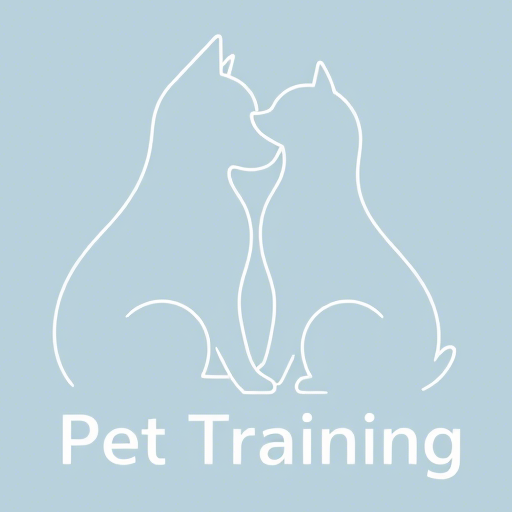In the world of dog training, every pet parent knows that a happy, healthy pup is a trainable one. But what if your furry friend has sensitivities that make training a challenge? That’s where limited ingredient dog food for training sensitive dogs comes into play. This specialized diet minimizes allergens, which can reduce itching, digestive issues, and overall discomfort, allowing your dog to focus better during sessions. In other words, by addressing dietary triggers, you’re not just feeding your dog—you’re setting the stage for successful skill-building. Above all, this approach emphasizes that nutrition and training go hand in paw, and I’ve seen it work wonders with my own sensitive rescue dog, who went from distracted to dedicated after a simple food switch.

Understanding Limited Ingredient Dog Food and Its Role in Training
Limited ingredient dog food is designed with simplicity in mind, typically containing a single protein source and a few easily digestible carbohydrates. For instance, brands might use chicken as the primary protein paired with sweet potatoes, avoiding common allergens like corn, wheat, or soy. This simplicity is key for sensitive dogs, as it reduces the risk of allergic reactions that can cause skin irritations, ear infections, or stomach upsets. Consequently, when your dog isn’t battling these discomforts, they can concentrate more on learning commands and behaviors. Moreover, many pet owners find that switching to a limited ingredient diet leads to fewer vet visits and a happier pet. If you’re curious about other dog food options, check out our guide on dog food for allergies, which dives deeper into ingredient analysis.
Why Sensitive Dogs Benefit from Limited Diets During Training
Sensitive dogs often react to multiple ingredients in standard foods, leading to inflammation and stress. But, on the other hand, a limited ingredient diet can soothe their system, making them more receptive to training. For example, a dog with food sensitivities might show signs like excessive scratching or lethargy, which distract them from tasks. By eliminating potential triggers, you create a calmer, more focused companion. Additionally, this diet supports overall health, boosting energy levels and immune function. Similarly, in my experience, a friend’s anxious terrier became a star pupil after switching to a hypoallergenic formula—proof that a little dietary tweak can yield big rewards.

How to Choose the Best Limited Ingredient Dog Food for Training
Selecting the right limited ingredient dog food involves considering your dog’s specific needs, such as age, size, and allergy history. Firstly, look for products with high-quality, named protein sources like lamb or fish, and avoid fillers that could cause reactions. Further, consult your veterinarian to identify any hidden allergens; they might recommend an elimination diet to pinpoint triggers. Meanwhile, read labels carefully—ingredients like peas or potatoes are common in limited diets, but ensure they agree with your dog. For more insights, explore our article on organic dog food for sensitive stomachs, which overlaps with many limited ingredient principles. Most importantly, choose a food that your dog enjoys eating, as palatability is crucial for using it as training rewards.
Key Ingredients to Look For and Avoid
When browsing options, prioritize ingredients that promote digestion and skin health, such as omega-3 fatty acids from fish oil or flaxseed. Conversely, steer clear of artificial preservatives, colors, and common allergens like dairy or beef if your dog is sensitive. That is to say, simplicity is your best friend here—a short ingredient list means fewer chances for reactions. For instance, some limited ingredient foods include probiotics to aid gut health, which can further reduce training distractions. To clarify, not all limited diets are created equal, so it’s wise to compare brands and read reviews. As a result, you’ll find a formula that not only nourishes but also motivates your dog during training sessions.

Integrating Limited Ingredient Food into Your Training Routine
Using limited ingredient dog food as part of your training strategy can enhance results by providing healthy, low-allergen treats. Firstly, measure out portions from your dog’s daily meals to use as rewards, ensuring you don’t overfeed. Subsequently, incorporate these treats into positive reinforcement techniques, like rewarding sits or stays. During training, observe your dog’s response—if they seem more engaged and less itchy, you’re on the right track. Moreover, this method builds a strong bond, as your dog associates learning with feeling good. For additional training tips, our piece on advanced dog training techniques offers great ideas to pair with a good diet. Certainly, patience is key; it might take a few weeks to see full benefits, but the payoff in focus and health is worth it.
Real-Life Success Stories and Tips
Many pet owners report dramatic improvements after switching to limited ingredient diets. For example, one owner shared how their dog’s constant ear infections vanished, allowing for longer, more productive training walks. Likewise, another found that using limited ingredient kibble as treats made their picky eater eager to learn new tricks. Above all, consistency in diet and training is crucial—stick to the same food to avoid upsetting your dog’s stomach. Meanwhile, keep sessions short and fun to maintain interest. If you need guidance, the American Veterinary Medical Association provides reliable resources on pet nutrition. In short, combining the right food with dedicated training can turn challenges into triumphs.

The Science Behind Limited Ingredient Diets and Canine Health
Limited ingredient dog food works by reducing the immune system’s workload, minimizing inflammation that can affect behavior and focus. Consequently, dogs with sensitivities often experience less brain fog and more mental clarity, making training easier. Further, studies show that diets low in allergens can improve skin and coat condition, which boosts confidence and sociability—key for training in group settings. That is to say, a healthy gut from simple foods can even influence mood, thanks to the gut-brain axis. For authoritative information, refer to the FDA’s guide on pet food, which highlights safety and labeling. Most importantly, this scientific backing gives pet parents peace of mind that they’re making a wise choice for their dog’s long-term well-being.
Common Misconceptions and How to Address Them
Some people worry that limited ingredient diets lack variety or nutrients, but in reality, they are formulated to meet all AAFCO standards for complete nutrition. To clarify, these foods aren’t about deprivation but precision—targeting what your dog truly needs. But, however, it’s essential to transition slowly to avoid digestive upset; mix the new food with the old over 7-10 days. Similarly, don’t assume all sensitivities are food-related; environmental factors can play a role too. As a result, a holistic approach that includes diet, exercise, and vet care is best. In conclusion, debunking myths helps you make informed decisions that benefit both training and health.

In summary, limited ingredient dog food for training sensitive dogs is a game-changer, offering a path to improved focus, health, and bonding. By minimizing allergens, this diet addresses the root causes of discomfort, allowing your dog to shine in training sessions. Whether you’re dealing with allergies, picky eating, or general sensitivity, a tailored approach can make all the difference. So, take the leap—your dog will thank you with wagging tails and eager responses. For more resources, browse our site’s review of Nature’s Menu for sensitive stomachs and other related articles. Remember, every dog is unique, so experiment with love and patience to find what works best.
Related Keywords: limited ingredient dog food, sensitive dogs training, hypoallergenic dog food, dog food for allergies, training sensitive dogs, dog nutrition, allergen-free dog food, pet health, dog training tips, canine diet.
